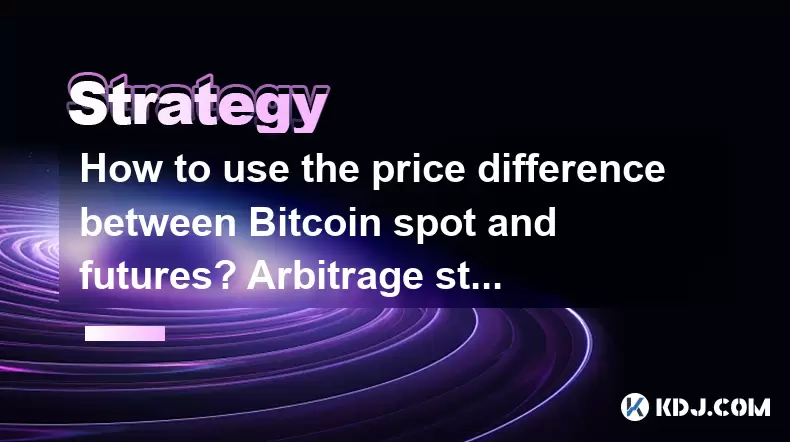-
 Bitcoin
Bitcoin $108,119.2441
0.67% -
 Ethereum
Ethereum $2,453.5972
0.96% -
 Tether USDt
Tether USDt $1.0002
-0.01% -
 XRP
XRP $2.1924
0.16% -
 BNB
BNB $649.9871
0.49% -
 Solana
Solana $151.5089
2.77% -
 USDC
USDC $0.9999
0.00% -
 TRON
TRON $0.2757
0.04% -
 Dogecoin
Dogecoin $0.1647
1.02% -
 Cardano
Cardano $0.5652
0.68% -
 Hyperliquid
Hyperliquid $38.7453
4.64% -
 Bitcoin Cash
Bitcoin Cash $495.2499
-0.34% -
 Sui
Sui $2.8252
3.32% -
 Chainlink
Chainlink $13.4477
2.27% -
 UNUS SED LEO
UNUS SED LEO $9.1413
0.72% -
 Avalanche
Avalanche $18.0719
2.01% -
 Stellar
Stellar $0.2392
0.47% -
 Toncoin
Toncoin $2.8737
1.04% -
 Shiba Inu
Shiba Inu $0.0...01159
1.37% -
 Litecoin
Litecoin $86.7133
1.04% -
 Hedera
Hedera $0.1488
0.33% -
 Monero
Monero $319.1619
1.53% -
 Polkadot
Polkadot $3.4308
2.24% -
 Bitget Token
Bitget Token $4.6349
-0.85% -
 Dai
Dai $1.0000
0.00% -
 Ethena USDe
Ethena USDe $0.9999
-0.03% -
 Uniswap
Uniswap $7.2389
2.16% -
 Aave
Aave $269.9171
5.12% -
 Pi
Pi $0.5335
-0.63% -
 Pepe
Pepe $0.0...09552
1.68%
How to make money in the currency secondary market
In the currency secondary market, traders utilize risk management techniques such as diversification, position sizing, and stop-loss orders to safeguard their investments against potential market volatility.
Jan 09, 2025 at 12:36 am

Key Points:
- Understand the concept of a currency secondary market
- Develop a trading strategy based on market analysis and risk tolerance
- Utilize various trading techniques such as spot, futures, and options
- Manage risk through diversification, position sizing, and stop-loss orders
- Stay updated with industry news and regulations to make informed decisions
Understanding the Currency Secondary Market:
The currency secondary market is a decentralized marketplace where individuals and institutions can trade cryptocurrencies outside of the initial exchanges where they were first issued. It allows for continued liquidity and price discovery beyond the initial offering. Unlike centralized exchanges, the secondary market operates in a peer-to-peer manner, where traders interact directly with each other without intermediaries.
Developing a Trading Strategy:
a. Identify your risk tolerance and investment goals: Determine the level of risk you are comfortable with and the financial objectives you aim to achieve. This will guide your trading strategy and investment decisions.
b. Conduct market analysis: Research market trends, identify patterns, and analyze technical indicators to forecast price movements and potential trading opportunities. Consider a combination of fundamental analysis (examining economic conditions, project milestones, and news events) and technical analysis (studying price charts and patterns) to make informed decisions.
c. Choose a trading strategy: Select a trading style that aligns with your risk tolerance, market outlook, and trading skills. Common strategies include scalping (frequent trades to capture small profits), range trading (trading within a specific price range), and trend following (trading in the direction of an established market trend).
Trading Techniques:
a. Spot trading: Involves buying and selling cryptocurrencies at the current market price, resulting in immediate ownership of the assets. It is suited for short-term traders or those looking to hold coins for the long term.
b. Futures trading: Allows for speculation on future price movements using contracts that represent the underlying cryptocurrency. Futures contracts provide leverage, enabling traders to multiply potential profits but also increasing the risk of losses.
c. Options trading: Involves acquiring contracts that give the right, but not the obligation, to buy or sell an underlying cryptocurrency at a specific price within a certain timeframe. Options offer flexibility, risk management tools, and the opportunity for income generation.
Managing Risk:
a. Diversify your portfolio: Spread investments across multiple cryptocurrencies to mitigate concentration risk and reduce the impact of market fluctuations on any single asset.
b. Control position sizing: Determine the amount of each cryptocurrency to trade based on your risk tolerance and account size. Avoid trading with more capital than you can afford to lose.
c. Utilize stop-loss orders: Place orders that automatically sell an asset if it falls below a predefined price level, limiting potential losses in adverse market conditions.
Staying Informed:
a. Follow industry news and updates: Monitor cryptocurrency news sources, social media platforms, and community forums to stay abreast of market events, project developments, and regulatory changes. This information can provide valuable insights for trading decisions.
b. Research tokens and projects: Conduct due diligence on cryptocurrencies and underlying projects before investing to understand their fundamentals, market adoption, and potential risks.
FAQs:
Q: What are the advantages of trading in the currency secondary market?
A: Liquidity, continuous price discovery, and access to a wide range of cryptocurrencies are key advantages of the secondary market. It offers flexibility, trading opportunities, and the potential for both short-term and long-term profit generation.
Q: Is it possible to consistently make money in the currency secondary market?
A: Consistent profitability in any financial market is challenging and requires a combination of skill,
Disclaimer:info@kdj.com
The information provided is not trading advice. kdj.com does not assume any responsibility for any investments made based on the information provided in this article. Cryptocurrencies are highly volatile and it is highly recommended that you invest with caution after thorough research!
If you believe that the content used on this website infringes your copyright, please contact us immediately (info@kdj.com) and we will delete it promptly.
- Bitcoin Wallets: Safeguarding Your Cryptocurrency Assets Like a New Yorker
- 2025-06-29 16:50:12
- Dogwifhat, Crypto Rally, and the Unexpected Challenger: A Meme Coin Mania?
- 2025-06-29 16:30:12
- Pi Network's Token Unlock: Sell-Off Fears or Future Fuel?
- 2025-06-29 16:30:12
- Altcoin Update: Vitalik Buterin on Major Changes in Governance and Digital Identity
- 2025-06-29 17:07:13
- Stablecoins, Crypto, and Ethereum: A 2025 Perspective
- 2025-06-29 17:30:12
- Altcoins in Focus: Remittix Steals the Show as Pepe Coin Gains Traction
- 2025-06-29 17:30:12
Related knowledge

What are the skills of Bitcoin option hedging? Practical case sharing
Jun 24,2025 at 04:01pm
Understanding Bitcoin Option HedgingBitcoin option hedging is a risk management strategy used by traders and investors to protect their positions in the volatile cryptocurrency market. By using options, individuals can limit potential losses while retaining the opportunity for profit. In essence, it allows one to insulate against adverse price movements...

How to use the price difference between Bitcoin spot and futures? Arbitrage strategy
Jun 20,2025 at 02:56pm
Understanding Bitcoin Spot and Futures MarketsTo effectively leverage arbitrage opportunities between Bitcoin spot and futures markets, it's essential to understand the fundamental differences between these two types of markets. The spot market refers to the direct buying and selling of Bitcoin for immediate delivery at the current market price. In cont...

How to increase DeFi lending income? Strategy and risk analysis
Jun 24,2025 at 02:08pm
Understanding DeFi Lending and Its Income PotentialDeFi (Decentralized Finance) lending has emerged as a popular way to earn passive income in the cryptocurrency space. Unlike traditional banking systems, DeFi lending platforms allow users to lend their crypto assets directly to borrowers without intermediaries. The lenders earn interest based on the su...

How to operate cryptocurrency cross-market arbitrage? Practical analysis
Jun 23,2025 at 04:01am
Understanding Cryptocurrency Cross-Market ArbitrageCryptocurrency cross-market arbitrage involves taking advantage of price differences for the same digital asset across different exchanges. The core idea is to buy low on one exchange and sell high on another, capturing the profit from the discrepancy. This strategy relies heavily on real-time market da...

How to make profits from high-frequency cryptocurrency trading? Sharing core skills
Jun 19,2025 at 05:07pm
Understanding High-Frequency Cryptocurrency TradingHigh-frequency trading (HFT) in the cryptocurrency market involves executing a large number of trades at extremely fast speeds, often within milliseconds. This method relies on small price discrepancies across exchanges or within a single exchange’s order book. Traders use complex algorithms and ultra-l...

What are the methods of cryptocurrency quantitative trading? Detailed analysis
Jun 22,2025 at 11:07pm
Understanding the Core of Cryptocurrency Quantitative TradingCryptocurrency quantitative trading refers to the use of mathematical models and algorithms to execute trades in the digital asset market. Unlike traditional discretionary trading, which relies heavily on human judgment, quantitative trading leverages data-driven strategies to identify profita...

What are the skills of Bitcoin option hedging? Practical case sharing
Jun 24,2025 at 04:01pm
Understanding Bitcoin Option HedgingBitcoin option hedging is a risk management strategy used by traders and investors to protect their positions in the volatile cryptocurrency market. By using options, individuals can limit potential losses while retaining the opportunity for profit. In essence, it allows one to insulate against adverse price movements...

How to use the price difference between Bitcoin spot and futures? Arbitrage strategy
Jun 20,2025 at 02:56pm
Understanding Bitcoin Spot and Futures MarketsTo effectively leverage arbitrage opportunities between Bitcoin spot and futures markets, it's essential to understand the fundamental differences between these two types of markets. The spot market refers to the direct buying and selling of Bitcoin for immediate delivery at the current market price. In cont...

How to increase DeFi lending income? Strategy and risk analysis
Jun 24,2025 at 02:08pm
Understanding DeFi Lending and Its Income PotentialDeFi (Decentralized Finance) lending has emerged as a popular way to earn passive income in the cryptocurrency space. Unlike traditional banking systems, DeFi lending platforms allow users to lend their crypto assets directly to borrowers without intermediaries. The lenders earn interest based on the su...

How to operate cryptocurrency cross-market arbitrage? Practical analysis
Jun 23,2025 at 04:01am
Understanding Cryptocurrency Cross-Market ArbitrageCryptocurrency cross-market arbitrage involves taking advantage of price differences for the same digital asset across different exchanges. The core idea is to buy low on one exchange and sell high on another, capturing the profit from the discrepancy. This strategy relies heavily on real-time market da...

How to make profits from high-frequency cryptocurrency trading? Sharing core skills
Jun 19,2025 at 05:07pm
Understanding High-Frequency Cryptocurrency TradingHigh-frequency trading (HFT) in the cryptocurrency market involves executing a large number of trades at extremely fast speeds, often within milliseconds. This method relies on small price discrepancies across exchanges or within a single exchange’s order book. Traders use complex algorithms and ultra-l...

What are the methods of cryptocurrency quantitative trading? Detailed analysis
Jun 22,2025 at 11:07pm
Understanding the Core of Cryptocurrency Quantitative TradingCryptocurrency quantitative trading refers to the use of mathematical models and algorithms to execute trades in the digital asset market. Unlike traditional discretionary trading, which relies heavily on human judgment, quantitative trading leverages data-driven strategies to identify profita...
See all articles

























































































